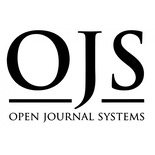Journal Policies

An article must be prepared and submitted in full compliance with not only national and international laws of ethics but also must respect common standards of ethics accepted by academicians. Therefore, all parties carry the responsibility for respecting principles of ethical standards.
The manuscripts that apply to the journal should be original and not be in the revision process of another journal. Likewise, there should be no further application to another journal after the application is made. Otherwise, the application will be rejected when it is detected.
Previously published abstracts and reports can be sent to the journal, but full-text published studies are not accepted.
Articles are sent to the reviewers after the Editoral review and plagiarism control through ITHENTICATE. Each study is subject to plagiarism detection (ITHENTICATE) by the journal's technical team before going through the "Blind Review Evaluation Process". It should be noted that the maximum rate of each citation is 3%.
The similarity rate of the studies should be below 15% as a result of the plagiarism program evaluation. If the source representation is not correct, even a rate of 1.00% could result in the return of the study to the author.
Ethical considerations in reporting research results: A sound scientific method is based on reproducibility and verifiability. Data, including visual materials, cannot be manipulated, changed, or reduced in order to verify research hypotheses or to obtain desirable results.
In case there is a mistake in the published version of an article, the author(s) must announce the mistake(s) to the audience. When such a mistake is recognized by the author(s), the Editor is informed for correction. Each corrected version and the corrections made are announced to the audience on the Journal’s website.
Data storage and sharing: In case the reliability of the submitted research is questioned, author(s) are responsible to provide the data used to the Editor. If authors fail to provide their data, the submission is rejected and is not accepted for evaluation again. Authors are required to store the data, applications procedures, and other materials utilized in their submissions for at least 5 years. After publication, if other researchers or authors request, data can be shared. Before sharing data, information, codes, or symbols about participants’/subjects’ identities must be deleted. If a study is funded by an institution, the rights of the institution must be protected and relevant acknowledgement must be added. If authors desire to share data, there must be a signed letter of agreement between the author(s) and the owner(s) of the data regarding the aim(s), the method(s), the scope, the conditions, and the limits for the use of the data.
Re-publishing part of or full Data: Re-publishing data refers to when findings from an accepted paper are re-used in another publication as if original. Re-publishing is an act of violation of copyright and related regulations because an author cannot give copyright permission for the same work to more than one entity. The full length or part of a previously published work cannot be published again or cited over the appropriate limits. A previously published work or one with significantly similar scope cannot be submitted for publication again. Papers presented in conferences but not published in conference proceedings can be submitted for publication by stating the conference presented at in a footnote. Papers which have been presented and published in conference proceedings cannot be submitted for publication.
In case authors wish their work to reach other audience, the following conditions must be met to re-publish the results:
Findings should be presented in unity and should not be presented in only some parts. Publishing multiple studies each of which cover a part of the same bulk of findings can be misleading. However, in cases where research has a wider scope, conducted during long periods, or has interdisciplinary focus, multiple studies based on the same data source can be published. When studies have interdisciplinary nature, publishing findings on one source may not be sufficient. If studies are conducted in a long period, findings obtained in different phases of this period can contribute to the field, and thus these can be published provided the phase is stated. In this case, the research based on previous phases needs to be cited. If a study conducted in long period is published following the studies based on the findings from previous phases, repeating the same findings should be avoided and quotes from such previous work should be cited.
The Editor should be notified when multiple studies based on the same research are submitted for evaluation. The editor decides whether the secondary studies meet the publication requirements.
Global or Self Plagiarism: Authors cannot use other researchers’ opinions or thoughts as their own. Similarly, authors cannot use thoughts, opinions, and parts of research from their own previous work without citing properly.
Confidentiality of the information obtained from participants should be maintained. Therefore, submitted work must not include information about participants’ identity. Participants should agree to be involved in research and when there is a hierarchical relationship between the researcher and the participants (e.g., teacher-student, director-teacher, etc.), researchers must not pressure participants to give consent. Particularly, in case an academician perceives his or her students as “potential subjects”, this would lead to misleading or subjective data resulting from reluctant responses from students and to violating participants’ rights and interests. Therefore, a special care should be given not to force students to participate.
If a study is based on the evaluation of a product or a service, the author(s) must not have a conflict of interest or a commercial benefit with the institution or the organization. In case there is a conflict of interest or such a potential, this should be indicated in the study as a limitation even if it is thought not to influence objectivity of the results.
|